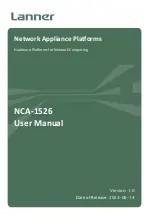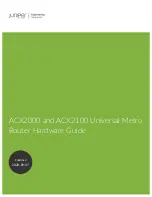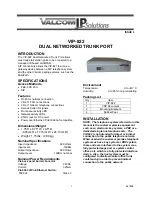
OPERATION
Copyright 2007
5-6
S SC150e HARDWARE REFERENCE
PLUS MODES
The PLUS mode protocol is available as an option to the S SC150e BURST
and PLATINUM mode network protocols. Selecting the 1024 byte maximum data length
will result in the maximum bandwidth. However, it will also lengthen ring time, error
correction time, and node latency.
Set up the PLUS mode protocol as follows:
•
Set CSR2[12] to ‘1’ to enable PLUS mode
•
Set CSR2[11] to define the maximum data message size. CSR2[11] only has an
effect when CSR2[12] is ON. CSR2[11] has the following definition:
0 = 256 byte maximum data length
1 = 1024 byte maximum data length
•
Set up the writes to S SC150e shared memory to be in sequential 32-
bit addresses. Data must be written to the S SC150e node with
sequentially incrementing 32-bit addresses to take advantage of the PLUS mode
protocol enhancement. It is not necessary to use the full 256 or 1024 byte data
length—they are maximum values.
The PLUS mode allows variable-length message packets in which sequentially addressed
data in the Transmit FIFO is transferred as a block in a single packet. Both BURST
modes are open-loop, non-error-corrected modes of operation.
The node appends 4-byte data values with sequential addresses until the maximum of 256
or 1024 bytes is reached, a non-sequential address is detected, the Transmit FIFO is
empty, or a transmit-interrupt event is detected. In both BURST and PLATINUM modes,
the node is permitted to have multiple packets on the ring simultaneously.
The transmission of a PLUS mode message is an automatic function, and for the most
part, cannot be controlled. If the appropriate PLUS mode bits are set in the control
registers, then the following algorithm applies:
1.
If Transmit FIFO is empty, end transmission.
2.
If the address field is not equal to the address of the previous transm 4,
end transmission.
3.
If length limit overflow for PLUS mode operation occurs, end transmission.
4.
ELSE transmit the four data bytes and when done GOTO step 1.
To maintain a PLUS mode transmission, step 1 requires that new data is written to the
S SC150e card at a rate greater than or equal to 16.7 MB/sec (this is a 32-bit
write every 240 ns). Any delay in the host data write will result in failure of step 1, and a
premature end to the PLUS mode transmission.
While this method results in the reliable generation of a PLUS mode transmission, it
increases the node latency. The S SC150e device automatically increases
PLUS mode throughput (when blocking is not used) when needed due to high-throughput
host, very busy network, etc.
Summary of Contents for SCRAMNet+ SC150e
Page 2: ......
Page 79: ...OPERATION Copyright 2007 5 29 SCRAMNet SC150e HARDWARE REFERENCE Figure 5 10 Quad Switch ...
Page 82: ......
Page 94: ......
Page 108: ......
Page 121: ...D D CONFIGURATION AIDS APPENDIX D CONFIGURATION AIDS ...
Page 122: ......
Page 127: ...1 GLOSSARY GLOSSARY ...
Page 128: ......
Page 135: ...1 INDEX INDEX ...
Page 136: ......
















































